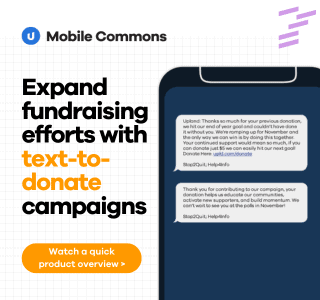 If your brand is using text messaging to reach out to consumers, there are two basic premises to be aware of. The first is that text messaging is an extremely powerful way to reach, engage, and convert mobile users into loyal users. The second is that as mobile marketing grows and evolves, what worked a decade ago is not going to hold up in current times.
If your brand is using text messaging to reach out to consumers, there are two basic premises to be aware of. The first is that text messaging is an extremely powerful way to reach, engage, and convert mobile users into loyal users. The second is that as mobile marketing grows and evolves, what worked a decade ago is not going to hold up in current times.
Since mobile marketing can be extremely rewarding, companies that want to keep up should learn how to adapt their marketing content to become successful SMS markers.
Why you should adapt your mobile marketing strategy
 As Sheryl Kingstone, research director at Yankee Group, points out, “It takes 90 minutes for the average person to respond to an email. It takes 90 seconds for the average person to respond to a text message.”
As Sheryl Kingstone, research director at Yankee Group, points out, “It takes 90 minutes for the average person to respond to an email. It takes 90 seconds for the average person to respond to a text message.”
With this in mind, put yourself in your consumer’s shoes for a minute. Ask yourself: What is it that I want from my favorite brands? The answer will probably include instant options, delivered directly to me, no middleman necessary.
Consumers these days expect companies to meet them where they’re at: their mobile phones. That’s why, according to Kingstone, 63% of businesses are prioritizing mobile as a way to be more responsive to customers, and 84% are interested in initiatives that provide pro-active communications.
To optimize your mobile marketing strategy to fit the modern consumer, here are two key phrases to keep in mind: segment and target, and location, location, location.
Segment and target: How to customize your marketing message for every consumer

Consumers are used to personalized content from the advances in digital marketing, so they can tell when a marketing message is generic or customized. Segmenting your users based on information they provide will therefore give you the upper edge in mobile marketing. All it takes is tailoring customized messages to groups specific to their interests.
For example, the consumer brand Cabela used SMS in a recent outreach program. They created a user profile for each subscribed mobile user based on previous purchases, then constructed personalized messages using that information. The strategy doubled the average order value and tripled Cabela’s demand goal. Brad Dolian, mobile marketing manager at Cabela’s in Denver, explained that their efforts laid a “good foundation via text,” so that they wouldn’t “have a dependency on an app.” Cabela’s case study demonstrates just how well segmentation and targeting work in a mobile marketing strategy.
Location, location, location: How to meet your consumers where they’re at
Using location-based text messaging tells your consumers that you care about them and are willing to go that extra mile in order to gain their support. As Gary Schwartz, CEO of Impact Mobile, New York says, “Mobile marketing is not about mobile technology, it is about understanding mobile consumers.”
Location based text messaging is an extremely versatile strategy. All it takes is figuring out where your consumers are with a simple question. Ask them for their favorite store location, for instance, and send out a text message every time that store has a sale. Request their zip code so that you can inform them of nearby promotional events. Or ask your customers for their favorite items, then compile and send a list of nearby stores stocked with each user’s wishlist.
While text messaging best practices are still changing and evolving, you can do a lot right now in order to reach your consumers. The tips above are great assets to help you build a stellar mobile marketing campaign. For more information on how to create the optimal text messaging strategy, please contact us.

